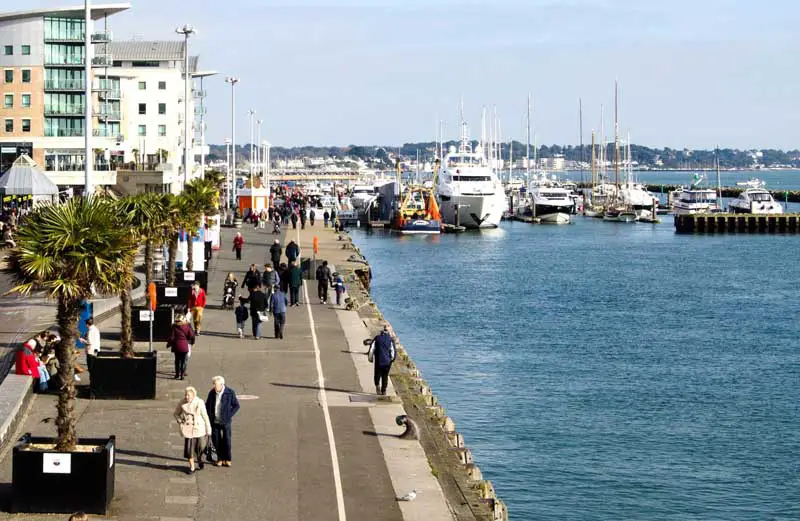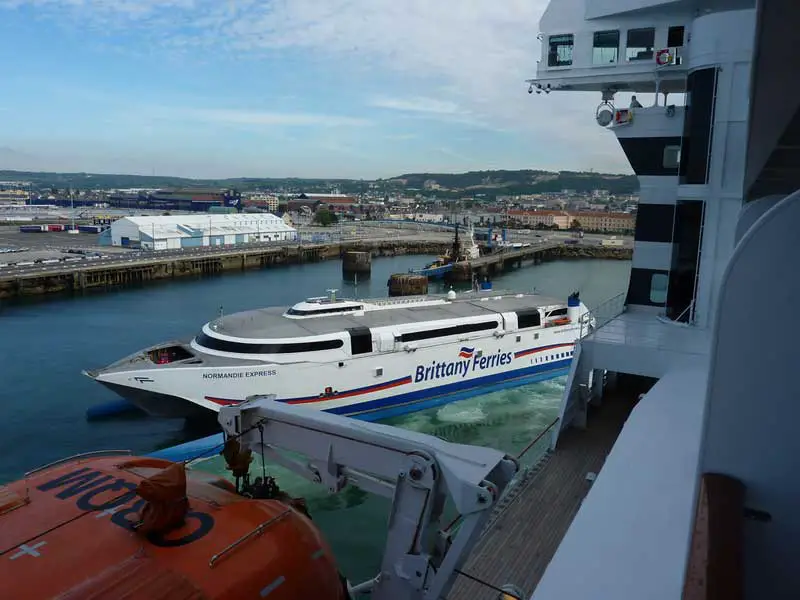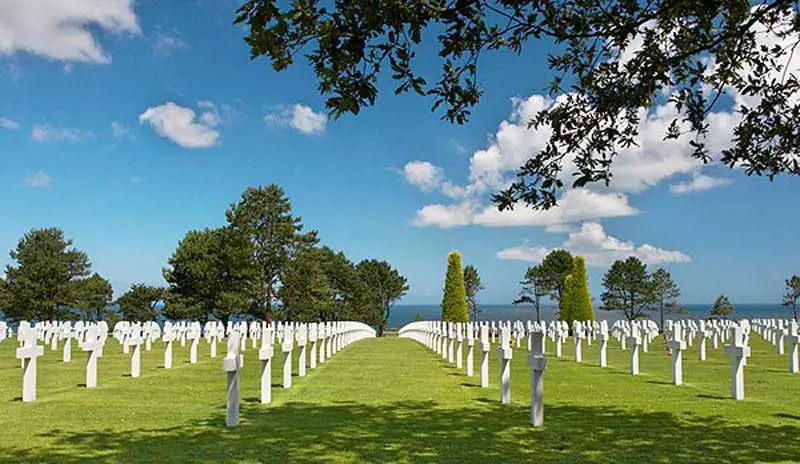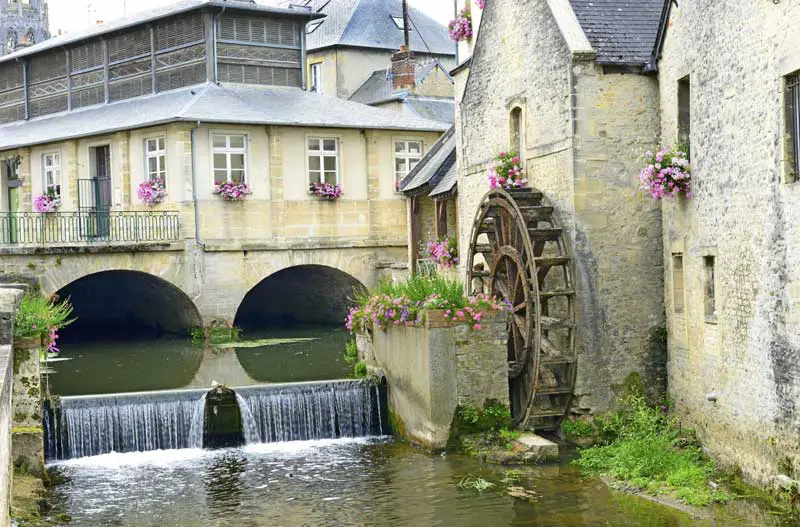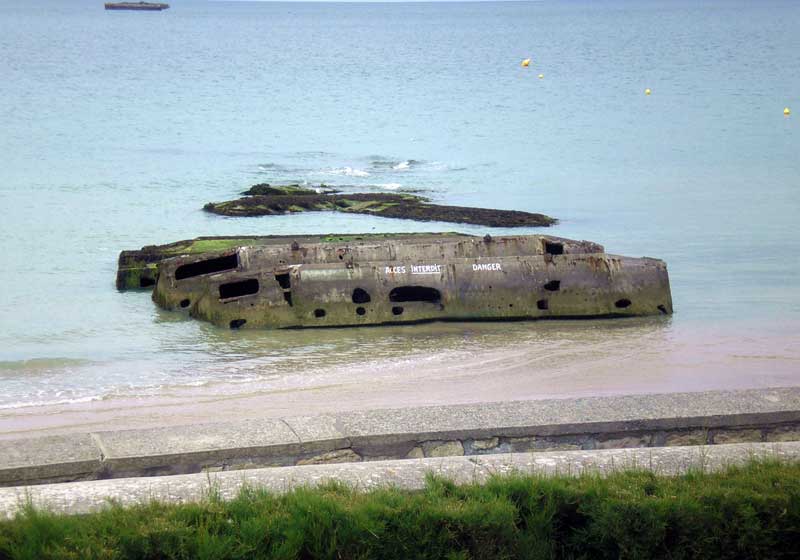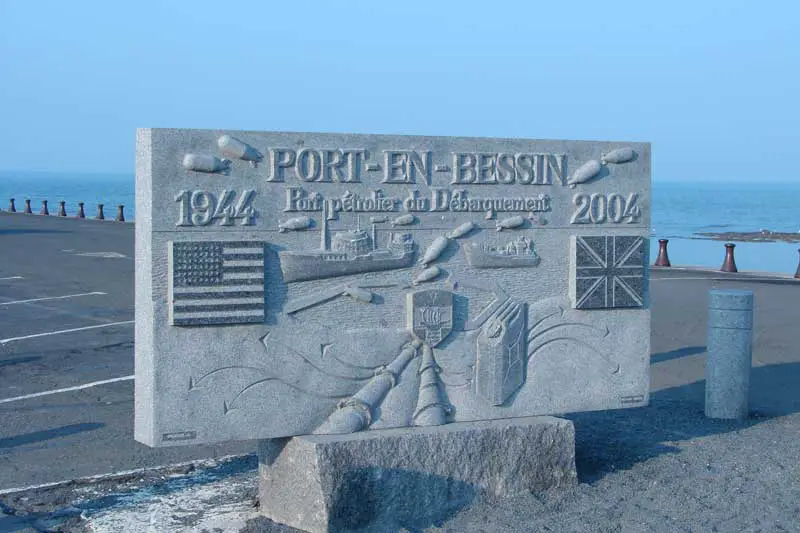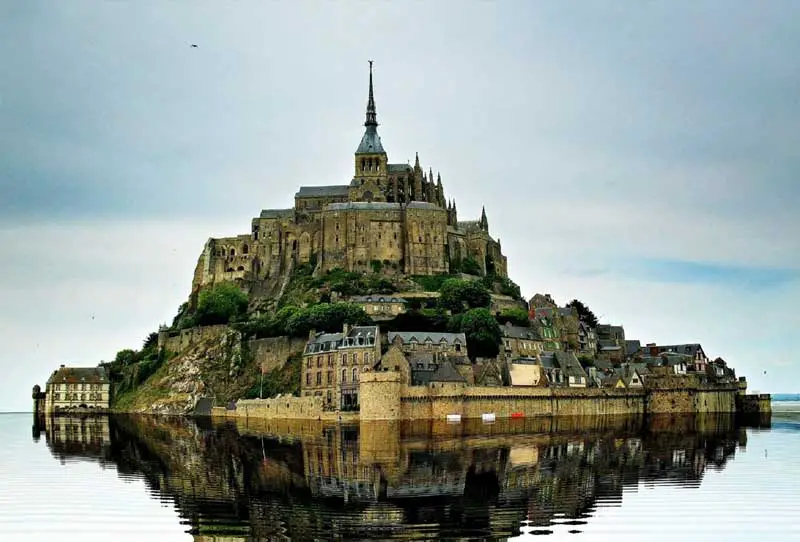About Cherbourg, France
Cherbourg, in Normandy, is a port town with a seafaring history that
is second to none. Cherbourg-en-Cotentin is protected by Cherbourg
Harbour, between La Hague and Val de Saire, and the city has been a
strategic position over the centuries, disputed between the English and
French. Cited as one of the “keys to the kingdom” by Vauban, it became,
by colossal maritime development work, a first-rate military port under
the leadership of Louis XVI and Napoleon, and holds an arsenal of the
French Navy. Cherbourg was the primary goal of US troops during the
invasion of Normandy in 1944.
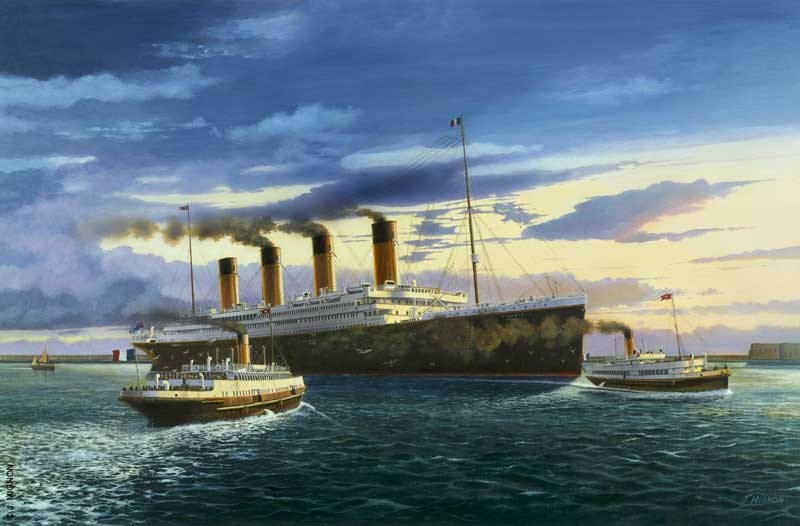
Peinture du Titanic en rade de Cherbourg, by Jacques Mignon
A stopping point for prestigious transatlantic liners in the first half
of the 20th century. On Wednesday, 10 April 1912 the RMS Titanic
crossed the English Channel and docked here at 7:00pm local time before
raising anchor at 9:10pm local time and sailing to her final stop
Queenstown, Ireland. The English and German companies Royal Mail Line
and Hamburg Amerika Line were the first to use Cherbourg for cruise
ship stop-overs as from 1869. French companies however, in particular
the Compagnie Générale Transatlantique, preferred the
port of Le Havre. Docking conditions there are not as good as those in
Cherbourg but the town is directly linked to Paris via the River Seine
and has been connected to the capital by train since 1847.
With the fresh upsurge of emigration, other foreign companies started
making regular stop-overs in Cherbourg and the town was, in turn,
linked to the capital by rail in 1858. Three maritime companies were
using the harbour in 1900 and this number rose to seven in 1913 then
eleven in 1927, including White Star Line, the future Cunard Line. In
the space of a century (1869-1969), more than 3.9 million passengers
came through Cherbourg, some leaving Europe for the Americas and others
coming into Europe; most of these voyages took place during the two
World Wars. A large part of the travellers boarding ships in Cherbourg
were emigrants. This is not really surprising as at the time, the only
means of reaching the new continent was by crossing the sea. Ships were
the only solution, whether travelling to Europe or America, for
business or pleasure.
Along with its use as a military, fishing, yachting and cruise ship
port, it is also a cross-Channel ferry port, with routes to the English
ports of Poole and Portsmouth, the Irish port of Rosslare Harbour and
St Helier on Jersey. Stena Line Ferries operates a ferty direct from
Rosslare in Ireland. This ferry is an overnight sailing with a choice
of cabin accommodation included. Restaurants offer dinner and
breakfast. Regular train services operate from Cherbourg station to
Caen, Rouen, Paris St Lazare (via Caen) and Rennes (via Lison).
Plan and Book:



Overview
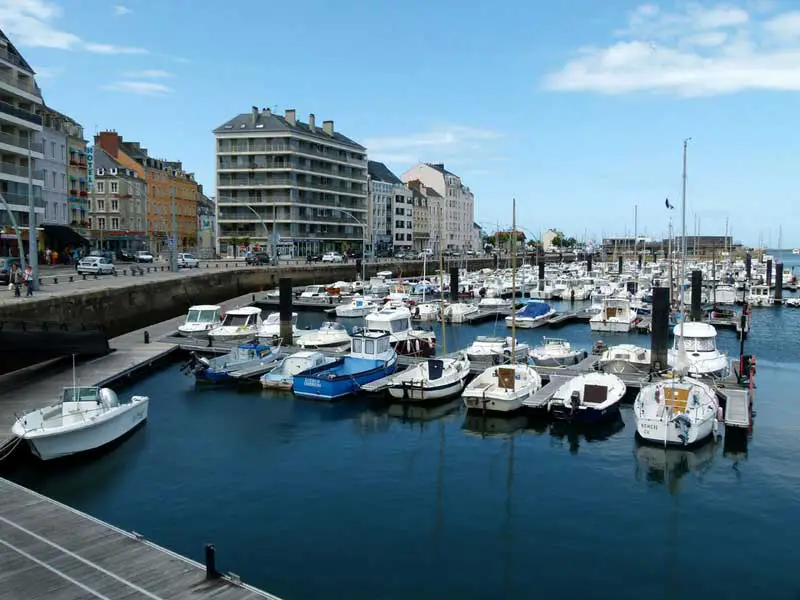
Cherbourg, in Normandy, is a port town with a seafaring history that
is second to none. One of the first places that the Titanic visited on
its fateful journey and quickly liberated from the Nazis after the
Normandy Landings, Cherbourg has a rich and often tragic past. Both
events are marked in outstanding museums in the city, with a brilliant
Titanic exhibition in the famous Cite de la Mer (‘City of the Sea’),
which is also home to the incredible La Redoubtable, the world’s
largest submarine open to visitors, and the Musee de la Liberation
(‘Liberation Museum’) inside the 19th century Fort du Roule that crowns
the summit of the Montagne du Roule.
A transatlantic port of the 20th century, Cherbourg saw Hollywood stars
arrive, such as Charlie Chaplin, who organised his disembarkation in
1952 to a press conference in the gare maritime, critical of the
McCarthyist America that he left. The port saw a lot of famous people,
including businessman Benjamin Guggenheim (1865-1912) for his fatal
voyage on the Titanic. Cinema then gave Cherbourg another lasting
reputation, through the images of Jacques Demy (1931-1990) and music by
Michel Legrand (1932-), in The Umbrellas of Cherbourg. Earlier, Frida
Boccara (1940-1996), knew great success in 1961 with her song Cherbourg
avait raison. The letters were not left with academician Georges Grente
(1872-1959), superior of the Saint-Paul Institute, and Ernest Psichari
(1883-1914), soldier and writer, whose garrison stay in Cherbourg in
1914 with the 2nd colonial artillery regiment inspires L’Appel des
armes.
Damaged during all eras, rebuilt in piecemeal, the city has no
architectural unity. Shale, extracted from the quarries of the
agglomeration, is the traditional material of construction. With
widespread coverage in the northern Cotentin, it is also used in
Cherbourg for the walls in the city, apparent or often covered with a
grayish or sometimes colourful coating. The frames are then Valognes
stone (limestone), pink granite of Fermanville, or brick, and the
underpinnings Armorican sandstone of the Roule and the Fauconniere.
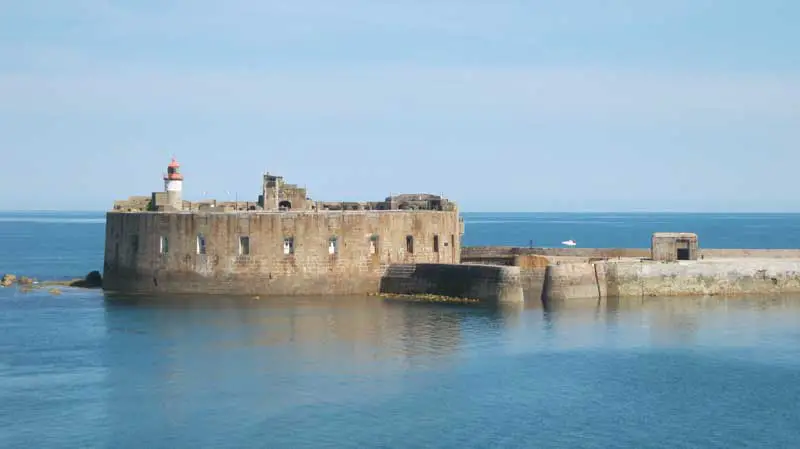
Attractions and Activities
From the fort, you are afforded a splendid scene of the sprawling
city, port, naval arsenal and yachting marina. First noted by Vauban
who realised the importance of Cherbourg as a defensive naval base
against the English during a visit in 1686, the harbour’s main dyke
began construction in 1782 and took over 70 years to build. Beside the
marina is the Plage Verte, a large green space that is perfect for
enjoying a stroll by the coast and is popular for events and outdoor
activities.
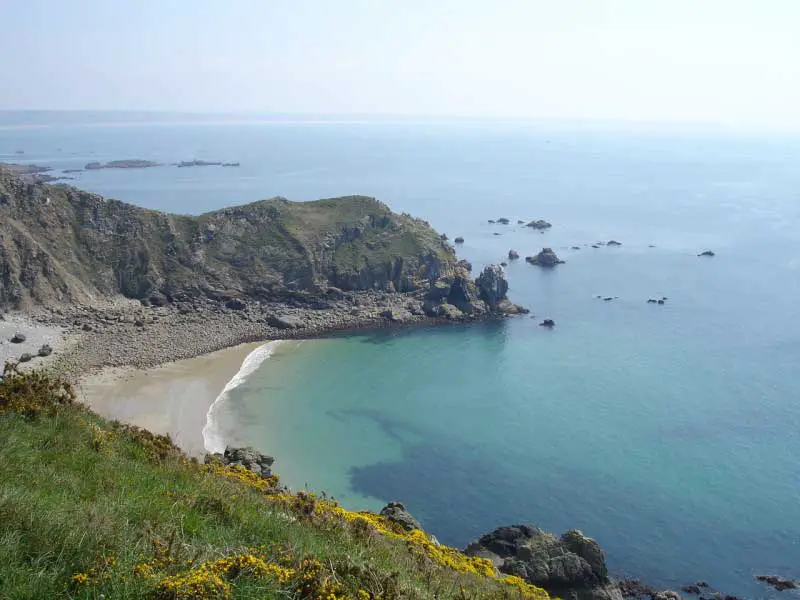
Explore the coast around Cherbourg where dramatic cliffs rise up
between sandy beaches along the Cotentin Peninsula, producing a
magnificent coastline. The Cap de la Hague, in particular, offers
spectacular rugged cliffs and a rustic moorland landscape. The Saire
Valley also offers some beautiful wild countryside that is subject to
tidal flooding.
A large fishing port, Cherbourg-Octeville offers a wide variety of fish
(yellowtail, bar, plaice, mackerel, rays, red mullet, pollock, lemon
sole, small-spotted catshark, etc.), crustaceans (brown crab, spider
crab, lobster) and shellfish (Saint-Jacques, scallops, mussels), caught
off the coast of the Cotentin peninsula. The so-called Demoiselles de
Cherbourg (fr) are small lobsters. Cherbourg is also located near three
oyster areas (Blainville, Saint-Vaast and Isigny). The most traditional
preparation is the matelote (fr). Alexandre Dumas also presented the
recipe of the “queue de merlan à la mode de Cherbourg ” [tail of
whiting in the Cherbourg manner], with butter and oysters.
Cherbourg has lots of good restaurants and is a great place to try some
of the tastes of Normandy, a region famous for its apples, cider,
mussels and rich butters and cheeses. A visit into the heart of the Old
Town will take you to the fresh fish market at Le Vieille Ville, or you
can wander through the grand markets of the Place de Gaulle, for fresh
produce, delicatessens and flower stalls. If you’re looking for great
shopping, there is the shopping centre beside the river, Les
Éléis, which has big international and national brands,
as well as some local stores, all housed inside a spectacular glass and
metal building that is designed to reflect the light.
Design by W3layouts

